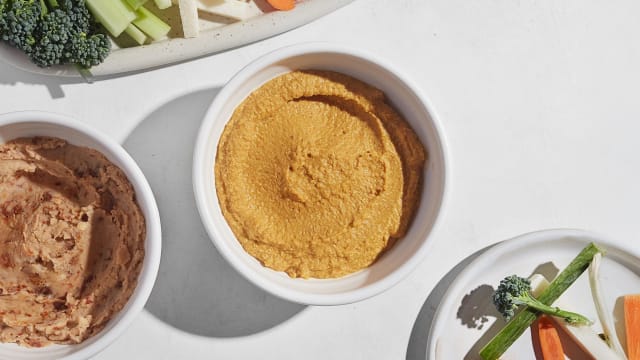Nutritional Yeast

Ingredient: Nutritional yeast
Latin name: Saccharomyces cerevisiae
Other names: Nooch
Uses: nutritional supplement, seasoning
What is nutritional yeast?
Nutritional yeast is a yellow yeast typically added to foods to boost nutrients and add a bit of flavor. It’s usually sold in a dry form resembling flakes you feed your pet goldish. Though it’s the same yeast species as brewer’s yeast, the products are different. Brewer’s yeast, as the name implies, grows on grains used in brewing beer and is then heat-killed to sell as a dietary supplement. Nutritional yeast is solely produced for its nutritional uses and is most often grown on sugar byproducts.
Why is nutritional yeast healthy?
Like all yeast, nutritional yeast is high in B vitamins. Fortified nutritional yeast is specifically high in vitamin B12, a vitamin that’s otherwise most easily obtained by eating animal products and that vegan diets therefore lack. (Vitamin B12 is an essential vitamin needed for the central nervous system to function and for red blood cells to form.)
Unfortified nutritional yeast doesn’t naturally contain vitamin B1 and contain lower amounts of all B vitamins compared to fortified nutritional yeast.
Nutritional yeast is also considered a complete plant-based protein since it contains all nine essential amino acids. It is also a great source of the powerful antioxidant glutathione which can help reduce your risk of heart disease, cancers, and other chronic illnesses.
What does nutritional yeast taste like?
Nutritional yeast has a savory, slightly nutty/bready flavor, similar to powdered Parmesan cheese. In fact, they’re both high in glutamic acid (aka nature’s MSG), famous for bringing umami to the party.
How do I use nutritional yeast?
The easiest way to use nutritional yeast is to shake it onto prepared foods as an umami-boosting seasoning. You’ll often see it in shakers at pizza joints and movie theaters, where people sprinkle it onto popcorn and pizza slices since it has a similar flavor and texture to the kind of shelf-stable Parmesan cheese sold in green cans. The texture is also handy for thickening sauces.
What does nutritional yeast pair well with?
Nutritional yeast works anywhere you’d expect savory, toasty, cheesy flavors to fit. It tastes good on the aforementioned popcorn and pizza, but try it on roasted crucifers (especially broccoli and cauliflower), savory snack mixes, fried potatoes, sautéed winter greens or grilled romaine (its flavor is reminiscent of Caesar dressing), and with creamy risottos and pastas — it’s a common addition to vegan macaroni and cheese.
Where does nutritional yeast grow?
The idea to consume brewer’s yeast as a nutritional supplement is an entirely American one, and commercial nutritional yeast was first produced by Fleishmann’s, which still produces active dry yeast for baking today. Nutritional yeast is commercially grown in stainless steel fermentation tanks, where the tiny fungi are raised on glucose solution derived from sugarcane and beet molasses. After a week or so, it’s separated from its growing medium, fortified with vitamins, and then dried.
How to buy nutritional yeast:
Nutritional yeast is typically sold in its powdery flake form. Most mainstream grocery stores will offer it in shaker jars or bags, or in look for it in the bulk section of health food stores and natural food co-ops.
Surprising nutritional yeast fact:
It’s ironic that nutritional yeast is so associated with hippies and a countercultural diet since its production is quite bad for the environment. Producing nutritional yeast releases acetaldehyde, a volatile organic compound (VOC) that is not great for air quality or human health, and in high enough quantities that the Environmental Protection Agency (EPA) has created emission standards for the production of nutritional yeast similar to those in place for carbon emissions and other pollutants.





